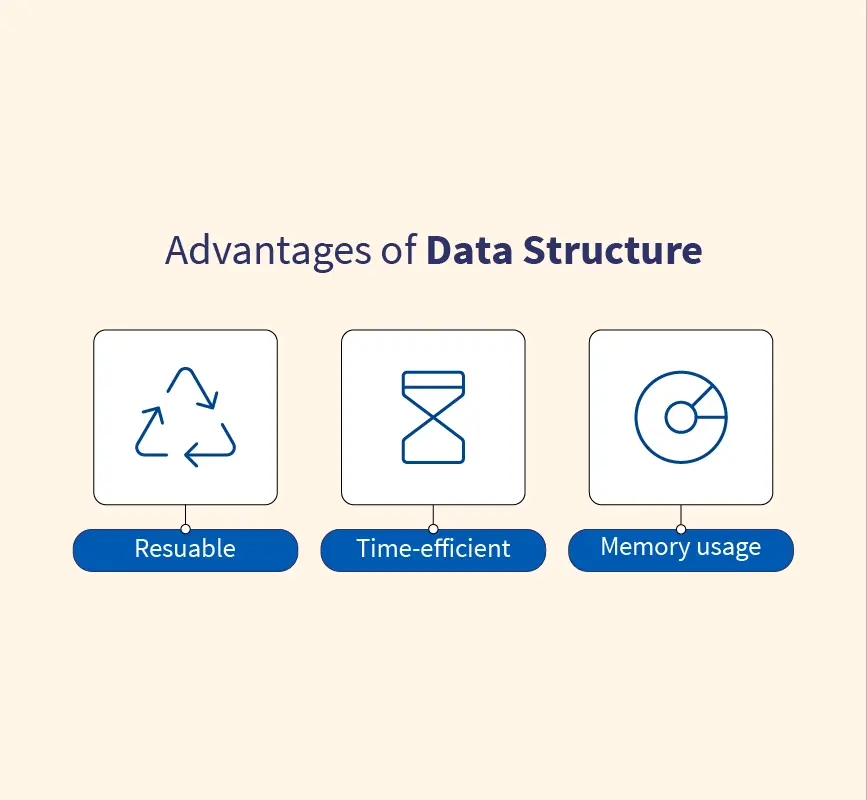Advantages of Data Structures

Data structures offer several advantages that make them essential components of computer science and software development:
Efficient Data Organization: Data structures provide efficient ways to organize and store data, allowing for quick and easy access, retrieval, and manipulation of information.
Improved Performance: Properly chosen data structures can lead to improved performance in terms of time complexity (execution speed) and space complexity (memory usage) of algorithms and operations.
Optimized Memory Usage: Data structures are designed to use memory efficiently, minimizing wastage and maximizing the utilization of available memory resources.
Facilitate Algorithm Design: Data structures serve as the foundation for designing and implementing algorithms to solve complex computational problems. They provide a structured framework for algorithm development and optimization.
Support for Abstraction: Data structures enable the abstraction of complex data into simpler, higher-level representations, making it easier to conceptualize, analyze, and manipulate data in software applications.
Modularity and Reusability: Data structures promote modularity and code reusability by encapsulating data and operations within reusable components. This enhances code organization, maintainability, and scalability.
Flexibility and Adaptability: Different data structures are suited to different types of data and operations. Having a variety of data structures at one's disposal allows developers to choose the most appropriate structure for a given problem or application.
Support for Parallelism and Concurrency: Certain data structures, such as concurrent data structures or lock-free data structures, are designed to support parallelism and concurrency, enabling efficient multi-threaded and distributed programming.
Facilitate Data Analysis and Visualization: Data structures play a crucial role in data analysis and visualization tasks by providing efficient ways to organize, process, and present large volumes of data in a meaningful and interpretable manner.
Foundation for Database Management Systems: Data structures form the basis of database management systems (DBMS), enabling efficient storage, retrieval, and manipulation of structured and unstructured data in databases.
Overall, data structures are fundamental building blocks of software systems, providing the groundwork for efficient computation, storage, and management of data in a wide range of applications and domains.
Thank you,